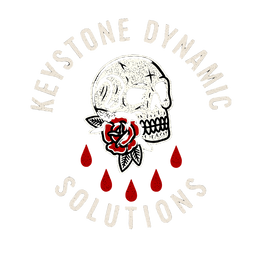Water Purification in a Non-Permissive Environment
Course Objective: Equip participants with the knowledge and skills to locate, assess, and purify water safely in a non-permissive environment (NPE), where resources are scarce, and survival depends on adaptability and improvisation.
On the first day, the class will be entirely classroom-based, focused on understanding the essentials of water purification through a combination of PowerPoint presentations and practical applications. We’ll go over the basics, including identifying water contamination, understanding various purification methods, and using specific equipment. The classroom setting allows students to get a solid foundation before heading into fieldwork, making sure everyone is comfortable with the concepts and tools they’ll need to succeed in non-permissive environments.
During day two, we’ll move into mountainous terrain to conduct the practical application of the concepts learned in the classroom. This field exercise will give students the opportunity to apply water purification techniques in a real-world environment, from identifying potential water sources to using purification equipment under challenging conditions. The rugged landscape offers an ideal setting to practice gathering and purifying water, allowing students to reinforce classroom knowledge and experience the difficulties encountered in non-permissive, remote areas.
Day 1 Start and end.
Start Time: 09:00
endex: 00:00
Day 2 Start and end.
Start Time 08:00
End Time: Dependent on class. No later then 21:00
Course Modules
Module 1: Introduction to Water Purification in NPEs
-
Defining Non-Permissive Environments
- What constitutes a non-permissive environment (NPE)
- Common challenges in NPEs: Limited resources, hostilities, lack of infrastructure
- Overview of waterborne diseases and contaminants
-
Importance of Water Purity
- Understanding dehydration, waterborne illness, and survival rates
- Prioritizing water purification over other needs in critical situations
-
Risk Assessment
- Evaluating water sources in an NPE: Rivers, streams, rainwater, and improvised sources
- Ranking water sources from highest to lowest risk
- Discuss about what a P.A.C.E. plan is in terms for water purification gather and sterilization
Module 2: Methods of Water Sourcing in an NPE
-
Finding Water in Difficult Terrain
- Techniques to locate water: following wildlife trails, vegetation, geography
- Utilizing maps and knowledge of terrain to identify potential water sources
-
Urban Environment Challenges
- Accessing water from unconventional sources: HVAC systems, fire hydrants, drainage systems
- Avoiding contaminated sources (e.g., stagnant pools, sewage areas)
-
Improvised Water Sources
- Collecting dew, rainwater, and condensation with improvised tools
- Methods to extract moisture from plants if necessary
Module 3: Water Purification Techniques
-
Boiling Water
- Proper boiling technique, duration, and limitations
- Field setups for boiling in the absence of cookware or open flame
-
Chemical Purification
- Overview of purification tablets, iodine, and bleach usage
- Using minimal chemical agents when supplies are limited (proper ratios and precautions)
- Handling chemical treatments under time constraints or resource scarcity
-
Filtration Techniques
- DIY filtration using accessible materials (cloth, sand, charcoal)
- Layered filtration: best practices and setup examples
- Limitations of improvised filtration
- Class Discussions on other methods of filtration techniques
-
UV Purification
- Using UV light in clear water with transparent containers (e.g., SODIS method with sunlight)
- Considerations for UV methods (water clarity, exposure time)
-
Improvised Distillation
- Setting up a basic distillation setup in a field environment
- Techniques to distill water when only contaminated or saline sources are available
Module 4: Safety and Sanitation Considerations
-
Safe Water Storage
- Selecting and improvising containers for safe water storage
- Avoiding contamination after purification
-
Field Hygiene to Prevent Contamination
- Establishing clean and dirty zones to avoid cross-contamination
- Proper handling and marking of containers in the field
-
Medical Treatment of Waterborne Illnesses
- Basic field treatment for dehydration and waterborne illness symptoms
- Identifying early symptoms of exposure to contaminated water
Module 5: Advanced Water Purification Equipment by CANA Provision
Objective:
This module introduces students to CANA Provision’s specialized water purification equipment, including the H2gO, SteriPEN, and CANA Provision AR-1. The goal is to understand each device’s usage, strengths, and ideal applications in non-permissive environments, where water purification needs to be reliable, efficient, and adaptable.
Module Content
1. Introduction to CANA Provision Water Purification Equipment
-
Overview of CANA Provision’s Mission:
Briefly cover CANA Provision’s commitment to durable, portable purification solutions for extreme conditions. -
Equipment Overview:
Introduce each device:- H2gO Water Purifier
- SteriPEN UV Water Purifier
- CANA Provision AR-1 Advanced Water Purification System
2. H2gO Water Purifier
-
Mechanism and Operation:
- Discuss how the H2gO uses electrolysis to produce a chlorine-based solution for effective pathogen removal.
-
Strengths:
- Portability, simple setup, and the ability to purify in batches without heat or fuel.
-
Limitations:
- Requires a saltwater solution, with limited effectiveness on chemical contaminants.
-
Best Use Cases:
- Ideal for high-bacteria environments and where there is easy access to salt or saltwater for solution preparation.
-
Demonstration and Practice:
- Show students how to prepare the saltwater solution, operate the H2gO, and safely store purified water. Allow time for questions and troubleshooting.
3. SteriPEN UV Water Purifier
-
Mechanism and Operation:
- Explain how the SteriPEN uses UV-C light to neutralize pathogens by disrupting their DNA.
-
Strengths:
- Effective against various pathogens without changing water taste or using consumable chemicals.
-
Limitations:
- Works best with clear water and requires battery power.
-
Best Use Cases:
- Suitable for clear water sources and situations where time is limited, with available options for battery recharging.
-
Demonstration and Practice:
- Demonstrate how to use the SteriPEN, discuss battery management in the field, and have students try it out.
4. CANA Provision AR-1 Advanced Water Purification System
-
Mechanism and Operation:
- Cover the AR-1’s multi-stage purification, including mechanical filtration, activated carbon, and UV stages.
-
Strengths:
- Comprehensive purification that tackles biological and many chemical contaminants, ideal for large-volume needs.
-
Limitations:
- Bulkier than the H2gO and SteriPEN, with maintenance requirements for filters and UV components.
-
Best Use Cases:
- Best suited for long-term group operations, high-risk chemical contamination areas, or urban environments with industrial runoff risks.
-
Demonstration and Practice:
- Assemble and demonstrate the AR-1, showing maintenance techniques and pre-filtration for optimal performance. Students can practice under instructor guidance.
5. Comparative Analysis and Decision-Making
-
Comparison and Usage Strategy:
- Compare each device’s strengths, capacity, ease of use, and ideal applications. Use a chart or checklist for visual reference.
-
Scenario Application:
- Provide realistic scenarios and have students discuss which device(s) would be most effective. Encourage students to consider factors like volume, contamination, environmental constraints, and mobility.
-
Combining Methods for Redundancy:
- Highlight the value of carrying multiple purification tools for redundancy and discuss combining techniques (e.g., using both filtration and UV for turbid water).
6. Practical Exercises in class room environment.
Module 6: Practical Exercise – Simulated NPE Scenario (Day 2)
-
Simulated Mission ( Day 2)
- Small teams navigate a simulated non-permissive environment to locate, assess, purify, and secure water
- Teams apply all learned techniques under timed conditions, with limited resources
-
Debrief and Evaluation
- Review challenges faced during the exercise, discuss alternate methods
- Instructor feedback and individual performance evaluation
Gear List for Water Purification Course
Required Gear:
-
Backpack
- Durable and large enough to carry all required gear, water, and personal items. Main pack or 3 day pack.
-
Water Purification Equipment
- H2gO Water Purifier - Provided to students by instructors
- SteriPEN - Provided to students by instructors
- CANA Provision AR-1 - Provided to students by instructors
- Chemical purification tablets - Provided to students by instructors
- Water containers (multiple, for storing purified water) we will have 5 gallon Jerry cans for the course, please bring a minimal of 2 water storage containers: Example- Nalgene, canteens, or other items similar.
-
Clothing and Protective Gear
-
Weather-appropriate clothing
- Lightweight, moisture-wicking base layers
- Insulating layers (if needed)
- Waterproof jacket and pants
- Durable hiking boots
- Hat and gloves (depending on weather conditions)
- Sunglasses and sunscreen (for sun protection)
- Insect repellent (if applicable)
-
Weather-appropriate clothing
-
Navigation Tools
- Compass
- Map of the area ( Will be Provided )
- GPS device (optional)
-
Field Gear
- Headlamp or flashlight (with extra batteries)
- Multi-tool (with knife, pliers, screwdriver, etc.)
- First aid kit (personal, compact)
- Whistle (for signaling)
- Rain cover for pack
- Energy bars or snacks (for field exercises)
- Waterproof dry bags (to protect electronics and other sensitive gear
-
Writing Materials
- Notebook (for notes and observations)
- Pen/pencil
-
Optional but Recommended
- Camera or GoPro (for documentation or learning purposes)
- Backup power bank (for electronics, especially GPS or communication devices)














